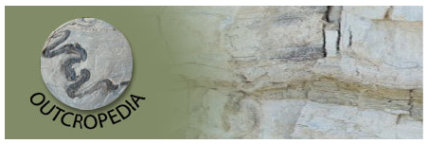Mylonitic migmatitic gneiss of the FMSZ (fig. 3a). These rocks present sheared leucosomes and K-feldspar, plagioclase and quartz porphyloclasts in a fine grained biotite and white mica matrix. The amount of matrix in this lithotype is about 50 – 60%. Asymmetric and stretched leucosomes are recognizable and points to a dextral top-to-the SW sense of…
Mylonitic migmatitic gneiss of the FMSZ (fig. 3a). These rocks present sheared leucosomes and K-feldspar, plagioclase and quartz porphyloclasts in a fine grained biotite and white mica matrix. The amount of matrix in this lithotype is about 50 – 60%. Asymmetric and stretched leucosomes are recognizable and points to a dextral top-to-the SW sense of shear (fig. 3a). In these outcrops it is also possible to observe post-mylonitic gentle folds with sub-horizontal axial planes affecting the mylonitic foliation (fig. 3b). The folds occur also in the other lithotypes of the shear zone and are responsible of variations of the orientation of the mylonitic foliation. They are not associated to a ductile pervasive axial plane foliation and they have been related to a post-shearing tectonic collapse as they are compatible with a nearly vertical shortening direction.
